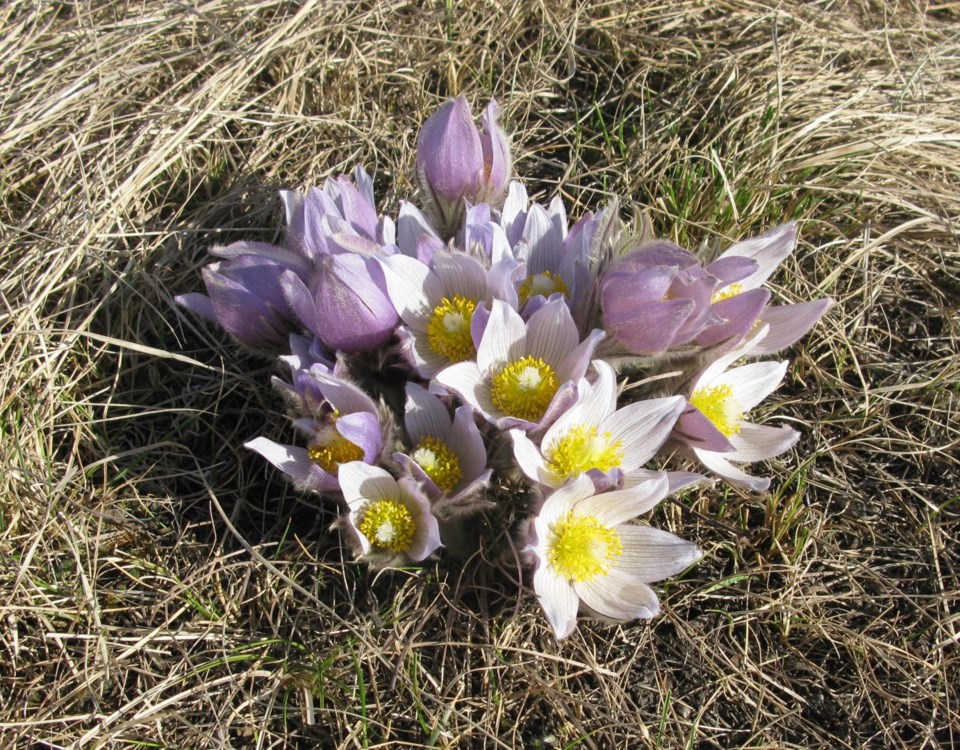Prairie springs are brief – the snow has only just melted, daytime temperatures are consistently above zero – and before you know it, trees are leafing out and the lawn needs mowing (but not quite yet). This spring sputtered once with the extra snowfall but I look at it as extra moisture, something that has been in short supply the last few years. As I’m at the starting block waiting for Mother Nature to start the race into summer, now is the perfect time to start getting ready for the year ahead:
- Equipment maintenance: Get your lawn mower and rototiller tuned up now to avoid the rush. While you’re at it, sharpen the mower blades. Sharp blades do less lawn damage, promoting healthy lush growth.
- Tools: Sharpen and clean your hand tools. Use an axe file to put a new edge on your shovels and hoes. For tools like pruners that require a finer edge, use a sharpening stone or replace the blade if it is damaged.
- Lawn care: Drain any standing water. Standing water that remains longer than a week or two is a problem not only for lawns but also trees and perennials. If you can, direct the water away from your yard with a ditch or pump it out to the street (but not your neighbour’s yard). Wait until early June (after the grass has started to grow) to dethatch or aerate.
- Tree and shrub care: Remove dead, damaged, rubbing or diseased wood. In the case of overgrown shrubs, remove up to one-third of the oldest branches (thickest stems with darkest brown bark) at their base to rejuvenate. If you’ve had trouble in the past with aphids, leaf rollers, mites, or scale insects, consider applying a horticultural or dormant oil spray to trees and shrubs before they leaf out. Horticultural oil is a fairly benign product, that works by literally suffocating the eggs or overwintering insect stage rather than killing the adult insects with a toxic substance.
- Perennial care: Once your beds are somewhat dry, cut back perennials and remove dead and decaying leaves. You can put this organic material in the compost provided they weren’t diseased last year (e.g. don’t compost rust-infested hollyhock stems). Do this before new growth appears; ornamental grasses and chives are especially early to start growing.
- Mulch: Apply fresh compost or other organic mulch to preserve soil moisture and moderate soil temperatures around perennials, trees, shrubs and bush fruit during the growing season.
- Seeds: Order or purchase seeds for the upcoming season. Most vegetables can be started now (tomatoes, squash).
- Vegetable garden: As soon as the soil is dry enough, rototill your garden to loosen and warm up the soil. This will also bring overwintering pests and weed seeds to the surface to dry out or get picked off by our feathered friends. But remember: if you rototill when it is too wet, you will end up with compacted soil – and a muddy mess. Add organic matter such as well-rotted compost or manure. The common wisdom of waiting until the May-long weekend to seed or transplant seedlings applies to tender or chilling-sensitive plants such as beans, corn, cucumbers, peppers, potatoes, squash, tomatoes and the like. What you can plant now are beets, carrots, lettuce, peas, radishes and spinach for an early harvest.
- Enjoy: Relax and take a moment or five to admire the early flowering tulips, grape hyacinth, spring Adonis, pussy willow, liverwort (Hepatica) and forsythia. Or take a walk on the wild side (e.g. natural spaces) to catch a glimpse of prairie crocus (in Saskatoon, stroll through Prairie Crocus Park along the river bank, north of the city: https://meewasin.com/crocus-prairie/).
This should keep you busy, at home and off the streets for the next few weeks. Happy Spring!
Erl gardens in Saskatoon.
This column is provided courtesy of the Saskatchewan Perennial Society (SPS; [email protected] ). Upcoming event - Spring Plant and Seed Exchange and Plant Sale Tuesday, May 30th 6:30 p.m at. Saskatoon Forestry and Zoo Hall. Check our website (www.saskperennial.ca) for more details.




